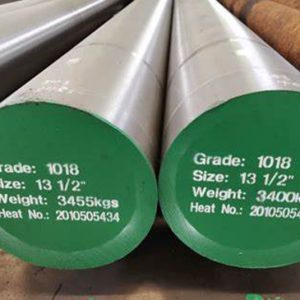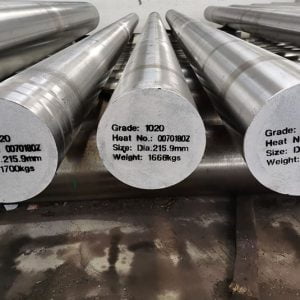Введение
Understanding the properties and performance of 1045 steel is essential for various industrial applications. One of the key factors that determine its characteristics is the 1045 steel carbon content. This medium carbon steel is widely used in manufacturing due to its excellent strength, toughness, and machinability. In this blog, we will delve into how the carbon content in 1045 steel impacts its overall performance and why this knowledge is crucial for engineers and manufacturers aiming to optimize their material selection for specific applications.
What is 1045 Steel?

1045 steel is a medium carbon steel with a carbon content of 0.45%. It is known for its excellent mechanical properties and is commonly used in applications requiring moderate strength and toughness. This steel grade is often used in the manufacturing of gears, shafts, axles, and other components where high strength and wear resistance are essential.
The Role of Carbon Content in Steel
The carbon content in steel plays a significant role in determining its hardness, strength, and ductility. As the carbon content increases, the steel becomes harder and stronger but less ductile. Conversely, lower carbon content results in softer and more ductile steel. Understanding this balance is crucial for selecting the right steel grade for specific applications.
Carbon Content and Mechanical Properties
The mechanical properties of 1045 steel, such as tensile strength, yield strength, and hardness, are directly influenced by its carbon content. Let’s delve into how these properties change with varying carbon content.
Tensile Strength
Tensile strength is the maximum amount of tensile stress that a material can withstand before failure. For 1045 steel, higher carbon content typically results in increased tensile strength. This makes 1045 steel suitable for applications where high strength is required.
Yield Strength
Yield strength is the stress at which a material begins to deform plastically. The yield strength of 1045 steel also increases with higher carbon content, providing better resistance to deformation under load.
Hardness
Hardness is a measure of a material’s resistance to deformation and wear. 1045 steel’s hardness improves with higher carbon content, making it ideal for components subjected to high wear conditions.
Carbon Content and Machinability
While higher carbon content enhances strength and hardness, it can also affect the machinability of 1045 steel. Machinability refers to the ease with which a material can be cut, shaped, and finished. Higher carbon content can make steel more challenging to machine due to increased hardness and reduced ductility.
Heat Treatment of 1045 Steel
Heat treatment is a process used to alter the physical and mechanical properties of steel without changing its shape. For 1045 steel, heat treatment can significantly enhance its performance characteristics.
Отжиг
Annealing is a heat treatment process that softens steel, making it more ductile and improving its machinability. Annealing 1045 steel involves heating it to a specific temperature and then slowly cooling it.
Quenching and Tempering
Quenching and tempering are processes that increase the hardness and strength of 1045 steel. Quenching involves rapidly cooling the steel after it has been heated to a high temperature, while tempering involves reheating the quenched steel to a lower temperature and then cooling it again.
Applications of 1045 Steel Based on Carbon Content
The carbon content in 1045 steel makes it suitable for various applications. Here are some examples:
Автомобильная промышленность
In the automotive industry, 1045 steel is used for manufacturing parts like crankshafts, gears, and axles due to its high strength and wear resistance.
Machinery and Equipment
1045 steel is ideal for machinery components that require moderate strength and toughness, such as hydraulic shafts, spindles, and guide rods.
Construction
In construction, 1045 steel is used for making structural components like beams and columns where moderate strength and good machinability are necessary.
Table: Mechanical Properties of 1045 Steel

| Property | Value |
|---|---|
| Carbon Content | 0.43% – 0.50% |
| Tensile Strength | 570 – 700 MPa |
| Yield Strength | 300 – 600 MPa |
| Hardness (Brinell) | 170 – 210 HB |
| Elongation | 16% |
| Impact Energy | 35 J |
Заключение
Understanding the impact of carbon content on the performance of 1045 steel is crucial for selecting the right material for specific applications. The carbon content directly influences the steel’s mechanical properties, machinability, and suitability for various industries. By carefully considering these factors, engineers and manufacturers can optimize the use of 1045 steel to achieve the desired balance of strength, toughness, and machinability. Whether it’s for automotive parts, machinery components, or construction materials, 1045 steel remains a versatile and reliable choice thanks to its well-balanced carbon content.
ЧАСТО ЗАДАВАЕМЫЕ ВОПРОСЫ
What is the typical carbon content of 1045 steel?
The typical carbon content of 1045 steel ranges from 0.43% to 0.50%.
How does carbon content affect the machinability of 1045 steel?
Higher carbon content increases hardness and strength but can reduce machinability, making the steel more challenging to cut and shape.
Can 1045 steel be welded?
Yes, 1045 steel can be welded, but preheating and post-weld heat treatment are recommended to prevent cracking.
What are the primary applications of 1045 steel?
1045 steel is commonly used in the automotive industry, machinery, and construction for parts like crankshafts, gears, axles, and structural components.
How does heat treatment affect 1045 steel?
Heat treatment processes like annealing, quenching, and tempering can significantly enhance the mechanical properties of 1045 steel, such as its hardness, strength, and ductility.





